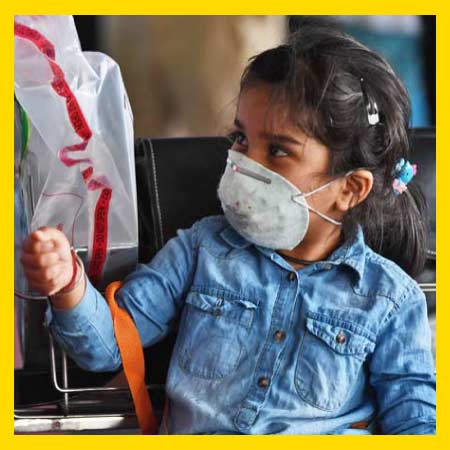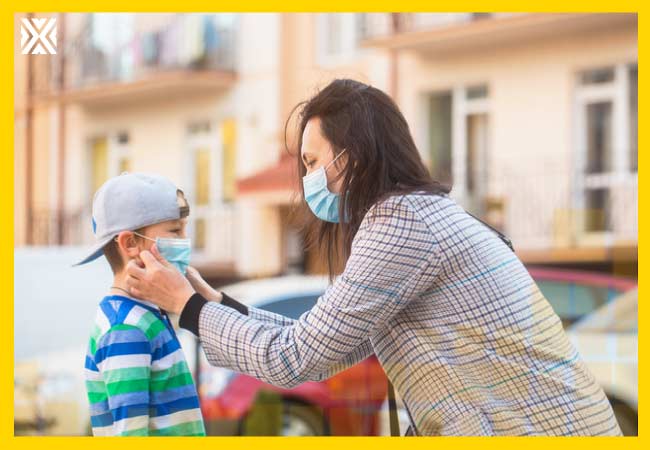Currency
July 12, 2020

Safety pros undoubtedly are experiencing déjà vu or “already been there” when they view the negative reactions to the recommendations from public health experts for preventing the spread of the coronavirus—from sheltering at home and maintaining a six-foot interpersonal distance to wearing a face mask.
They’ve heard all the excuses for noncompliance before—“It won’t happen to me,” “This PPE is too uncomfortable and inconvenient,” “We have freedom of choice in our country; and if I want to risk receiving an injury or illness, it’s my personal right to do so.”
Given that human nature or the soon, certain and positive consequences of at-risk behavior overpower the delayed, uncertain and negative consequences of safe behavior, organizations implement interventions to influence compliance with safety rules and regulations. Here again, blatant non-compliance with state and community mandates to perform certain behaviors to prevent the spread of COVID-19 is commonly observed in the workplace with regard to safety-related behavior.

Psychologists refer to such contrary behavior as “countercontrol” or “psychological reactance,”—presumed to be a reaction to the threat of losing one’s personal freedom or individuality. Thus, safety pros realize the need to accompany top-down mandates with education/training sessions and sometimes behavior-based incentive/reward contingencies.
Employees are urged to perform a variety of safety-related behaviors in order to prevent a workplace injury—from wearing safety glasses and a hard hat to using a vehicle safety belt and fall protection. These and other desirable behaviors are performed to: a) protect workers from adverse environmental conditions (e.g., air pollution, loud noise, and fire), b) decrease bodily harm from a mishap (e.g., vehicle collisions, human slips, trips, and falls), and c) reduce the likelihood of an injury-causing behavior (e.g., non-skid shoes and Hi-Viz. clothing). When workers do not perform these injury-protective and injury-preventive behaviors, they put themselves at risk for personal harm.
However, behaviors performed to prevent the spread of the coronavirus have a higher-level, actively caring for people (AC4P) purpose. Sheltering at home, maintaining a six-foot social distance and wearing a facemask prevents the spread of COVID-19. Such behavior helps others as much if not more than it helps those who perform those behaviors.
Almost every college class or workshop on motivation includes a presentation of Maslow‘s Hierarchy of Needs. Categories of needs are arranged hierarchically, and it’s presumed we don’t attempt to satisfy a need at one level until our needs at the lower levels are satisfied to some degree. We are first motivated to fulfill our physiological needs—basic survival requirements for food, water, shelter and sleep.
After these needs are under control, we are motivated by the desire to feel secure and safe from potential dangers. Next, we have our social-acceptance needs—to have friends and feel a sense of belonging. When these needs are gratified, our concern focuses on self-esteem—earning self-respect and feeling worthwhile.
After enjoying a boost in self-esteem, we become self-actualized when achieving our full potential. While many have learned that self-actualization is atop this need hierarchy, Maslow revised his need hierarchy near the end of his life by placing another ultimate achievement at the top—self-transcendence. We are the best we can be when we reach beyond our own self-interests and contribute to the needs of others. Whenever we perform AC4P behavior.
How satisfying to realize that you reach the top of Maslow‘s Hierarchy of Needs every time you act on behalf of another person’s health and/or safety. And doing this, helps to satisfy your lower-level needs that really never get completely satiated—social acceptance, self-esteem and self-actualization.
They’ve heard all the excuses for noncompliance before—“It won’t happen to me,” “This PPE is too uncomfortable and inconvenient,” “We have freedom of choice in our country; and if I want to risk receiving an injury or illness, it’s my personal right to do so.”
Given that human nature or the soon, certain and positive consequences of at-risk behavior overpower the delayed, uncertain and negative consequences of safe behavior, organizations implement interventions to influence compliance with safety rules and regulations. Here again, blatant non-compliance with state and community mandates to perform certain behaviors to prevent the spread of COVID-19 is commonly observed in the workplace with regard to safety-related behavior.

Psychologists refer to such contrary behavior as “countercontrol” or “psychological reactance,”—presumed to be a reaction to the threat of losing one’s personal freedom or individuality. Thus, safety pros realize the need to accompany top-down mandates with education/training sessions and sometimes behavior-based incentive/reward contingencies.
Taking Prevention to a Higher Level
Employees are urged to perform a variety of safety-related behaviors in order to prevent a workplace injury—from wearing safety glasses and a hard hat to using a vehicle safety belt and fall protection. These and other desirable behaviors are performed to: a) protect workers from adverse environmental conditions (e.g., air pollution, loud noise, and fire), b) decrease bodily harm from a mishap (e.g., vehicle collisions, human slips, trips, and falls), and c) reduce the likelihood of an injury-causing behavior (e.g., non-skid shoes and Hi-Viz. clothing). When workers do not perform these injury-protective and injury-preventive behaviors, they put themselves at risk for personal harm.
However, behaviors performed to prevent the spread of the coronavirus have a higher-level, actively caring for people (AC4P) purpose. Sheltering at home, maintaining a six-foot social distance and wearing a facemask prevents the spread of COVID-19. Such behavior helps others as much if not more than it helps those who perform those behaviors.
Reaching the Highest Need Level
Almost every college class or workshop on motivation includes a presentation of Maslow‘s Hierarchy of Needs. Categories of needs are arranged hierarchically, and it’s presumed we don’t attempt to satisfy a need at one level until our needs at the lower levels are satisfied to some degree. We are first motivated to fulfill our physiological needs—basic survival requirements for food, water, shelter and sleep.
After these needs are under control, we are motivated by the desire to feel secure and safe from potential dangers. Next, we have our social-acceptance needs—to have friends and feel a sense of belonging. When these needs are gratified, our concern focuses on self-esteem—earning self-respect and feeling worthwhile.
After enjoying a boost in self-esteem, we become self-actualized when achieving our full potential. While many have learned that self-actualization is atop this need hierarchy, Maslow revised his need hierarchy near the end of his life by placing another ultimate achievement at the top—self-transcendence. We are the best we can be when we reach beyond our own self-interests and contribute to the needs of others. Whenever we perform AC4P behavior.
How satisfying to realize that you reach the top of Maslow‘s Hierarchy of Needs every time you act on behalf of another person’s health and/or safety. And doing this, helps to satisfy your lower-level needs that really never get completely satiated—social acceptance, self-esteem and self-actualization.









